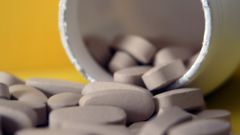Sedatives and their types
This group of drugs can reduce the excitability of the Central nervous system to exert regulatory effects by restoring the balance between the processes of excitation and inhibition and, if necessary, to strengthen the processes of inhibition. Sedative drugs have a less pronounced psychosedative effect than tranquilizers, and do not possess a hypnotic and muscle relaxant properties, and, importantly, did not cause ataxia.
The systematic use of sedatives for long time mental drug dependence does not occur to them. In recommended therapeutic doses, sedatives are not able to possess a hypnotic effect. But, providing a calming effect on the Central nervous system, they may provoke the onset and deepening of sleep.
Distinguish sedative drugs of synthetic and plant origin. Of the drugs of plant origin widely used remedies based on medicinal plants such as motherwort, Valerian officinalis, Melissa officinalis, patrinia medium (stone Valerian), Passiflora incarnated, peony and tropical plants of the family percovich Kava-Kava. Pharmacological effects of herbal sedatives is very diverse. For example, in addition to the Valeriana officinalis sedative effect that is associated with a reduction in the excitability of the Central nervous system, has antispasmodic properties, improves coronary circulation, regulates heart function, increases the secretion glands of the gastrointestinal tract and improves bile secretion.
Similar to Valerian effects on the body has motherwort, providing also the antihypertensive effect and reducing the heart rate. Passion flower and peony additionally have anticonvulsant action. Melissa inherent antipruritic, antihypertensive, antispasmodic, and prevent arrhythmia act. In addition, she has a slight choleretic effect, favorable way helps to restore intestinal flora and enhance secretion of the gastro-intestinal tract. Kava-Kava has an excellent hypnotic, antimicrobial, and analgesic effects.
Drugs that have a sedative effect
A calming effect is also characteristic of certain medications, which are often not considered as a means of influencing the Central nervous system. For such drugs sedative effect is related to the primary pharmacological effects. For example, a pronounced sedative effect can occur when you use a diuretic acetazolamide (Diakarb"), certain antihypertensive drugs — clonidine hydrochloride ("Clonidine"), or metildofy. Sedative and in some cases even have a soporific effect of some antihistamines, especially diphenhydramine hydrochloride (Diphenhydramine) and promethazine.
To achieve the best therapeutic effect is very important the right choice of sedatives or appropriate drug combinations and to establish the most effective dose that can be determined only specialist after prior consultation.













